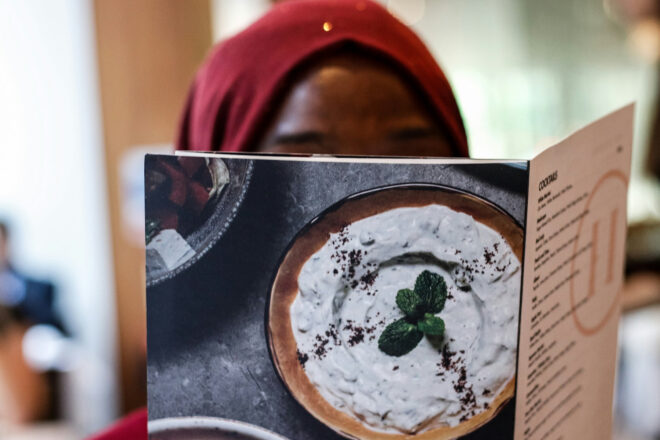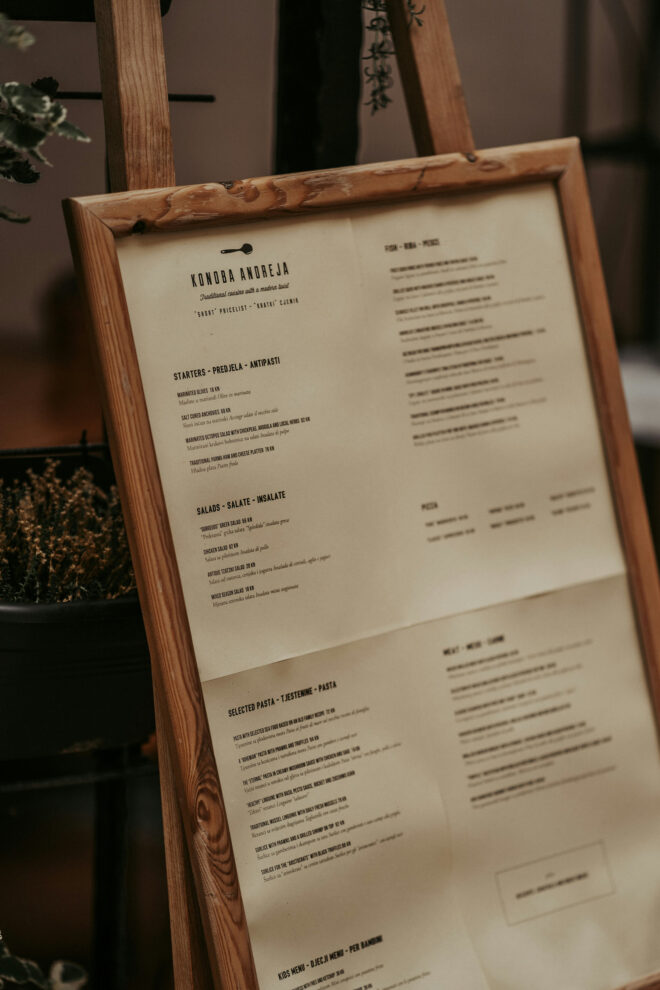
Use the descriptions of your dishes to entice customers and encourage them to order more.
The delicious food you provide your customers is the foundation of your restaurant.
But it’s the words that sell it. That’s why menu copy that converts is so vital to your success.
Like most restaurant owners and managers who juggle staffing, inventory, and a dozen marketing priorities, you are incredibly busy. Yet, polishing your menu copy is one of the best moves you can make to improve your revenue.
Put this task at the top of your list and work on smarter menu descriptions that convert diners into premium orders, nudge guests toward add-ons, and lift average ticket prices.
We’ve put together some easy and practical copy strategies with information on how to make them work in your restaurant. Writing dish descriptions that raise average ticket prices is important, and it helps your menu do some of the selling before your front-of-house team even gets to the table.
Why Menu Copy is So Important
A study by the Cornell Food and Brand Lab found that when you use descriptive menu labels, your sales increase by about 27%. Their study showed this is for menu items that were rewritten using sensory, evocative language.
In fact, customers even rated those menu items as higher quality and better value afterwards. You can see that crafting new menu content pays for itself very quickly with increased average ticket prices.
Try it yourself on a couple of menu items that you really want to push and see what happens over a month-long period.
What this means for you is that for a small investment in creativity and a little bit of testing, you can boost orders of targeted dishes, increase add-ons (think sides, upgrades, desserts), and raise your average check all without raising base prices.
If you’re worried about writing the copy on your own, there are plenty of marketing agencies and even freelancers willing to help you with your menu copy.
The Three Copy Principles That Matter
First, you want to include sensory details, and you want to keep it simple and not too complex.
For example, use one or two sensory words that evoke taste, texture, or aroma, such as “charred,” “buttery,” “crisp,” or “velvety.” Avoid long ingredient lists that look like a pantry inventory. Instead, focus on what the guest will experience when they taste and see your food.
Your copy should be descriptive and unique.
Second, you want to highlight the differentiator of the menu item.
For example, ask some questions like these to decide:
- Why is this dish special at my restaurant?
- Is the pork heritage-breed?
- Is the salsa a family recipe?
- Is the steak grilled over pecan wood?
- What makes the ingredients special? Are they sourced locally?
Highlight the single thing that sets the dish apart from what your guests could get elsewhere. This makes higher-margin choices seem worth the money.
Third, use the structure of your copy to lead your customer to choose the item. This is vastly different from using pressure.
For example, use short modifiers like “featured” or “chef’s favorite” to guide your customers’ choices. You can also use symbols with your text to highlight items. Or consider bolding text or using different colored copy to bring out special words.
Combine that with smart placement (see menu engineering below), and your servers become order-completion agents rather than the only sales channel.
A Simple Template for Menu Writers
When you rewrite the copy for a dish, follow this three-line template. It’s quick, consistent, and testable.
- Name of the dish: This should be concise and appetizing. Avoid bland technical names and keep it short.
- A micro-story: This should be around eight to 20 words and one sentence. Include a sensory word, plus your differentiator, plus the benefit to the customer. For example, you might say, “Buttery local halibut, pan-seared and finished with lemon-thyme butter.”
- A micro sell: This sentence should be around three to 10 words. Craft a short value proposition such as: “gluten-free option available,” “pairs with our house pinot,” or “locally sourced ingredients.”
Here is an example of a complete description using the three-line template:
Grilled Pork Chop: Our chef’s signature dish, this Applewood-smoked pork chop, is seared to a crisp crust and finished with cider glaze. Pairs perfectly with roasted root vegetables.
This structure respects guest attention and fits most menu designs.

Short, concise, and creative is the way to go with your menu copy.
The Highest Converting Words
Here’s a list of some high-conversion words that convert and raise your average ticket prices:
- House-made
- Hand cut
- Wood grilled
- Slow braised
- Line caught
- Buttery
- Crisp
- Smoky
- Marinated overnight
- Served family style
- Locally sourced
- Chef’s favorite
Do try to avoid over-exaggerated words like “world’s best.” Also, skip long lists of each ingredient and be clear and unique.
Menu Engineering to Increase Conversions
Crafting better copy on its own helps increase average tickets. However, when you add copy to placement, you get an even bigger increase. (tweet this)
Restaurant menu engineers recommend pairing strong descriptions with visual tactics.
For example:
- Remove unnecessary dollar signs.
- Use whitespace to spotlight hero dishes.
- Consider “callout” boxes for high-margin items.
These design choices lower friction and direct the diner’s eye to profitable choices without making guests feel pressure to choose one dish over another.
Pro tip: Test one change at a time so you can measure impact.
Here’s your 30-day testing plan:
- Week 1: Pick three high-margin items to rewrite using the template.
- Week 2: Update your print and online menus and tell your servers about the new micro stories so they can share them too.
- Week 3–4: Track the number of orders of your rewritten menu items, add-ons sold, and average tickets. Compare the results to the previous month. Small changes should be visible within a few weeks.
Consistency and Your Brand
Always be consistent between platforms and stay true to your brand.
Guests often see your menu descriptions on your website or on to-go platforms first. Then, they encounter them in your restaurant.
Consistency is key, and you want to use the same concise micro-story across all your platforms, both digital and in-house.
Also, think about your voice. Your tone should match your brand (playful, refined, rustic, fine dining, etc.).
In addition, in all your arenas, add professional-quality photos.
Quick Checklist Before You Publish Your Revised Menu
- Use one sensory word in every description.
- Call out one differentiator.
- Add a short micro-sell.
- Try displaying pricing without dollar signs.
- Train your servers on 10-second descriptions that match your revised menu copy.
- Track orders and average tickets on items with revised copy.
Final Thoughts on Menu Copy That Converts
As with all marketing, you want to test, measure, and repeat to gauge your results. Use these results to then refine your tactics.
Menu copy is a low-cost lever with measurable returns. Make changes and see what works.
And remember, what converts and raises average tickets for a neighborhood pizza place won’t be the same as a white-tablecloth spot. Know your brand and stay true to your brand voice. Incorporate creative content, amazing photos, and graphics, and you’re ready to launch your revised menu. (tweet this)
Finally, make incremental tweaks, track results, and scale what works.
Restaurant Web Design, Made Easy.
See what so many restaurateurs are raving about.
At Restaurant Engine, we don’t just build beautiful websites to house your online menu. We help restaurant owners like you create a cohesive, fast, user-friendly website that is the perfect place to highlight your restaurant, host your menu, and take reservations if necessary. As the pivotal piece of your online marketing, finding a web developer you trust is key to a high-performing website.
Let us help you build a brand that guests remember and return to.
Are you ready to take your restaurant to the next level with a new website?
Get your free website consultation today!
Images: Max Burger and Suad Kamardeen on Unsplash

